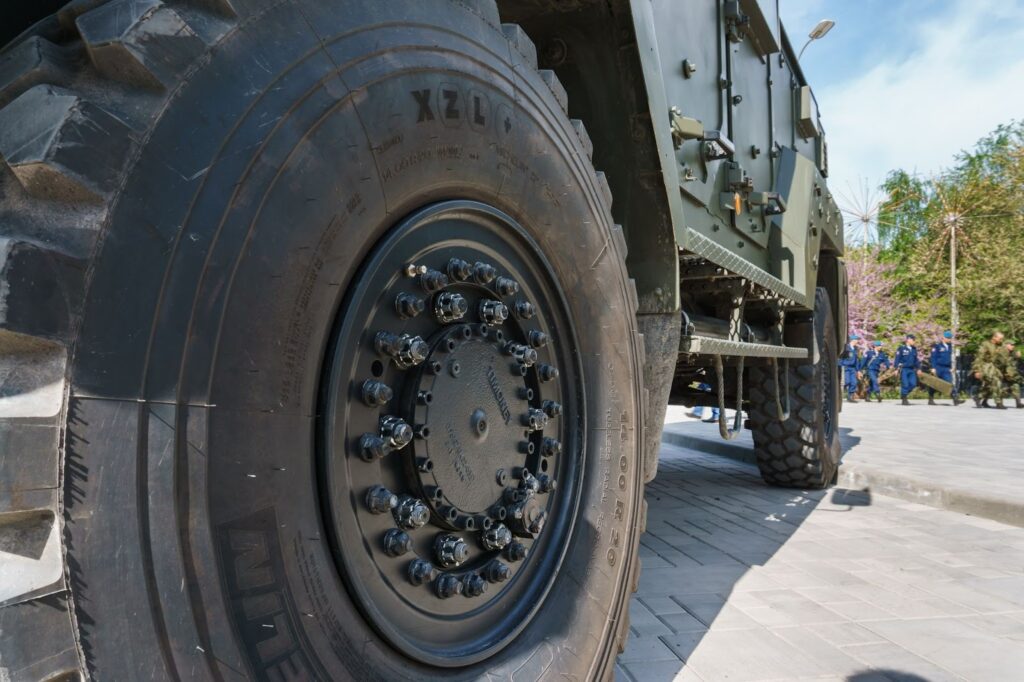
If you want a truck that can conquer mud, rock, rough access roads, steep grades, or unpredictable weather, you can’t rely on a factory setup. Harsh environments demand a vehicle that’s engineered—not just accessorized—for punishing conditions. Building a truck capable of surviving extreme terrain means choosing the right components, understanding your operating environment, and ensuring every upgrade works as part of a complete system.
As one expert conversion company puts it on their Super Single Conversions page:
“At DBL Design, we understand that your truck is more than a vehicle—it’s a tool that must perform in the harshest conditions, offering reliability, durability, and strength.”
That mindset is exactly what it takes to build a terrain-dominant truck. Below, we break down the essential upgrades and engineering considerations required to create a high-performance machine ready for the toughest environments.
1. Start With a Clear Purpose
The terrain you plan to drive determines how you should build your truck. For example:
- Deep mud and sand require wide tires, aggressive tread, and flexible tire pressures.
- Rocky terrain demands traction control, reinforced suspension, and high-clearance bumpers.
- Heavy loads on uneven ground require specialized gearing, stronger axles, and stable suspension.
The clearer your purpose, the more precise—and cost-effective—your build can be.
2. Upgrade to Super Single Wheels and Heavy-Duty Tires
For serious off-road conditions, super single wheels are one of the most important upgrades. They reduce failure points, handle extremely high loads, and allow for wider, taller, off-road-optimized tires.
Look for wheels that offer:
- Forged aluminum construction
- High load ratings (7,000–8,000 lbs per wheel)
- Options for 1-, 2-, or 3-piece designs depending on your weight and application
Match your wheels with heavy-duty tires from proven manufacturers (like Continental or Goodyear) that offer:
- Massive load ratings
- 41″–43″ diameters
- Tread styles designed specifically for traction in extreme conditions
These combinations ensure stability, grip, and strength even when your terrain tries to defeat you.
3. Regear for Performance and Safety
When you increase tire size—especially to 41–43″ tires—your factory gearing won’t cut it. Regearing is essential to:
- Maintain transmission temperatures
- Prevent differential strain
- Improve towing and hauling on inclines
- Restore torque needed for slow-speed crawling
- Protect drivetrain components
If your truck regularly carries heavy loads (14,000+ lbs), deeper gearing becomes even more important to maintain longevity and safe operation.
4. Choose a Suspension System Designed for Abuse
Terrain like washboards, ruts, or rocky slopes can punish a factory suspension system. A true harsh-terrain build needs:
- Heavy-duty shocks (mono-tube, bypass, or nitrogen adjustable)
- A lift designed not to compromise steering geometry
- Reinforced components that keep the truck stable under heavy loads
- Springs or air systems that maintain ride height with added weight
A quality suspension isn’t just about comfort—it protects every part of your truck and ensures you maintain control in dangerous terrain.
5. Add Recovery Tools That Match Your Conditions
No matter how well your truck is built, recovery equipment is your insurance policy. Consider:
- 12,000–16,500 lb winches (front and rear)
- Heavy-duty steel or synthetic rope
- Reinforced front and rear bumpers
- Class 5 hitches and hidden goosenecks
- D-rings and recovery points rated for extreme force
If you ever get stuck in an isolated location, these tools become indispensable.
6. Consider a CTIS System for On-the-Fly Tire Adjustments
A Central Tire Inflation System (CTIS) allows you to adjust tire pressure directly from the cab. This is a game-changer for terrain like:
- Soft sand
- Snow and ice
- Mud
- Rock crawling
- Long stretches of rough, undeveloped roads
Lower pressure gives more traction; higher pressure improves fuel efficiency and stability. CTIS gives you full control without having to stop and air down manually.
7. Upgrade Brakes, Axles, and Critical Safety Components
Harsh terrain increases strain on braking systems and axles. For a true severe-duty build, consider:
- High-capacity axles (11,000+ lb ratings)
- Severe-duty brakes with increased stopping power
- Cross-drilled rotors to reduce brake fade
- Electric lockers for improved traction
- Beadlock or double-beadlock wheels for low-pressure driving
These upgrades keep the truck safe when tackling steep grades, heavy loads, or unpredictable terrain.
8. Protect the Truck With Reinforced Armor and Structural Components
The harsher the terrain, the more protection you need. Reinforcing your truck might include:
- High-clearance steel bumpers
- Skid plates
- Fender flares and liners for oversized tires
- Rock-strike protection around key components
- Heavy-duty beds designed for load stability
Protection is often cheaper than repair—and keeps the truck running longer.
Final Thoughts: Build a Truck That Outlasts the Terrain
To survive the harshest terrain, a truck must be engineered as a cohesive system. Wheels, tires, gears, suspension, brakes, axles, and recovery equipment all work together to create a machine capable of handling punishing environments without failure.
A well-built severe-duty truck doesn’t just perform better—it lasts longer, stays safer, and delivers reliability when you need it most.


